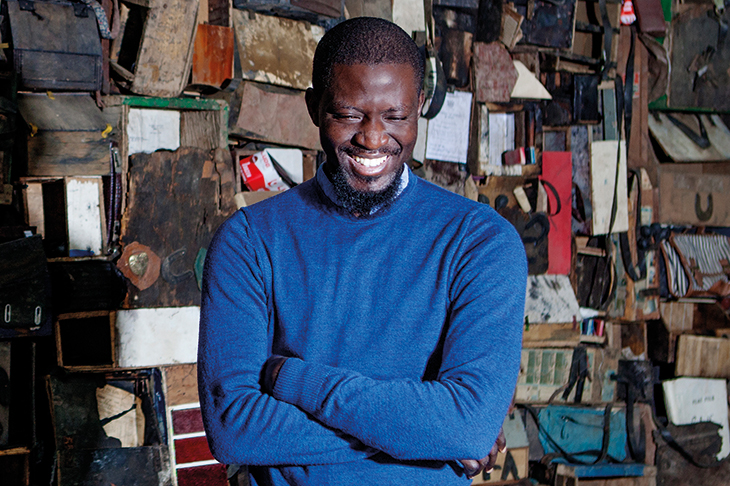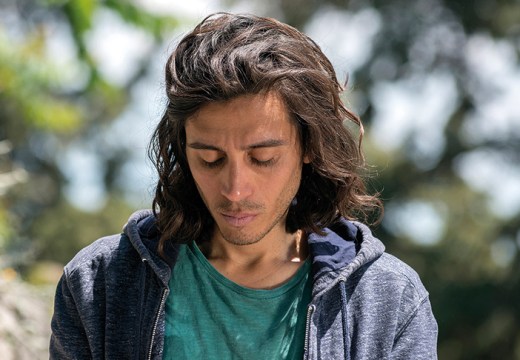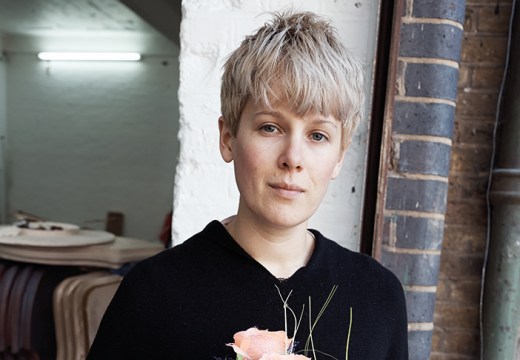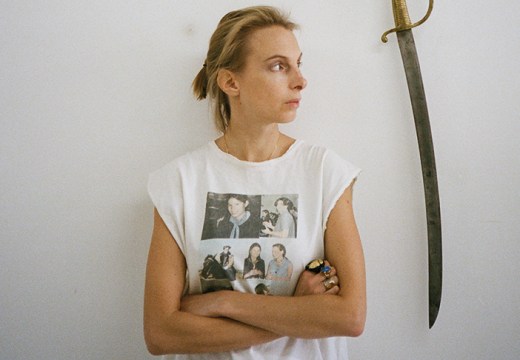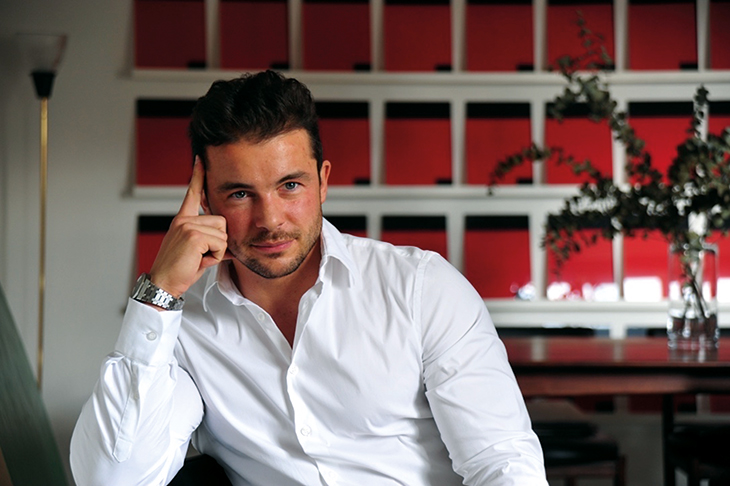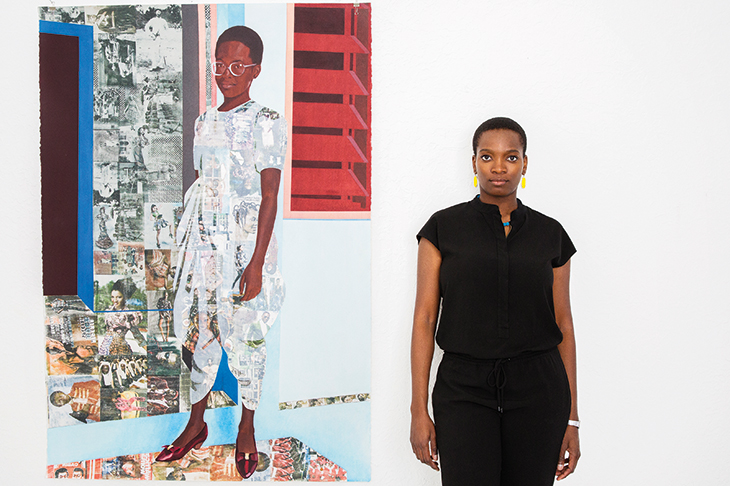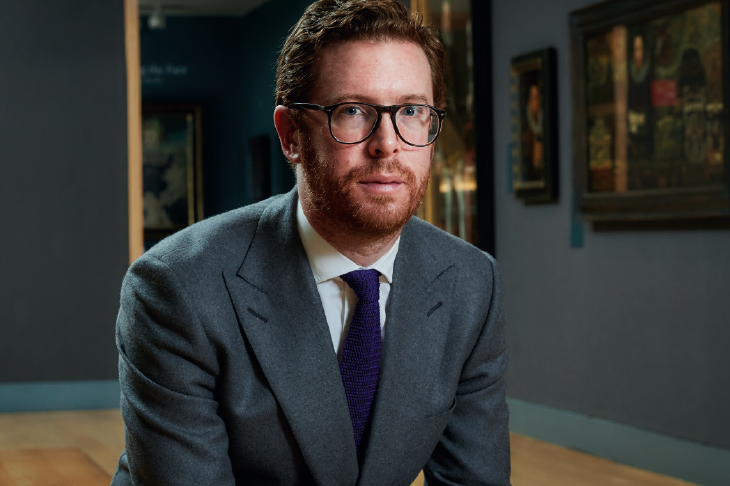30 | Accra, Kumasi and Tamale, Ghana
‘This is a beginning phase of my practice,’ says Ibrahim Mahama, self-effacingly. ‘I haven’t been working for long.’ The second part is certainly true. Mahama, born in Tamale, northern Ghana in 1987, graduated from his MFA at Kwame Nkrumah University of Science and Technology, Kumasi, in 2013. A visit to Documenta 13 the year before, he tells me, was decisive for the development of his career; there, he saw the kind of work that helped crystallise his own ambitions and sense of possibility. The five years since then have been busy for him: via the main international exhibition at the Venice Biennale in 2015, and gallery shows across the world, Mahama has gone from visiting one Documenta to exhibiting at the next. Now represented by White Cube in London, Mahama has in just under half a decade become one of the most internationally visible artists working out of Africa today.
Practice, in its fullest sense, is a key term for Mahama: he is an artist determined to pursue praxis rather than theory, to make things happen with his art. It is, he says, about drawing attention to his concerns in such a way that he can effect change in the world. He is best known for large-scale installations in which he drapes or wraps buildings and spaces in vast shrouds patched together from used jute sacks. Each sack, Mahama notes, records the movements and inequalities of international capital, worn into the fabric by its consecutive uses. The sacks leave Ghana packed with the country’s major export, cocoa beans, then pass across further national borders carrying a succession of less valuable commodities. Eventually, they are too worn and dirty to be used again.
Most of the sacks that Mahama collects have ultimately been repurposed by charcoal traders in Ghana. When the sacks become useless – at what the artist terms their ‘moment of crisis’ – he acquires them, providing their owners with new sacks in return. For Mahama, this cycle embodies the way in which those places that supply the world’s primary resources and commodities somehow end up being ‘the least important spaces in the world’. His installations, displayed in spaces of commerce, postcolonial hope and abandonment within Ghana, both cover over and draw attention to their sites, and their crucial but marginal status as nodes in world capital’s web of exchange.
Human bodies are central to this too, as Mahama made clear with Nyhavn’s Kpalang (2016), an installation covering the harbour façade of Copenhagen’s Kunsthal Charlottenborg. ‘Kpalang’ means ‘sack’ in Dagbani – one of the main languages of Mahama’s native northern Ghana – but it can also mean ‘skin’, ‘flesh’ and ‘body’. There are real people caught in, and dependent on the warp and weft of capital as it weaves its way across the world.
Mahama emphasises the extent to which his training under his mentor, the artist kąrî’kạchä seid’ou, gave him not just an expansive sense of global art history and theory, but also a responsibility to move beyond ‘the mere symbolic and philosophical aspects’ of art. ‘Issues of emancipation,’ he points out, are a ‘day-to-day’ matter both for him and for the teams of local workers who collaborate on the creation of his installations – some of whose voices are recorded in the book documenting Mahama’s Exchange Exchanger project (2013–16).
Mahama has a vivid sense of history, which he sees everywhere in the built environment of modern Ghana – from the decaying railways, constructed by the British in the 19th century, to the grain silos and public spaces built in the hopeful years immediately following independence, to the rash of development that followed the re-establishment of democratic rule in 1992. All the same, he is focused on the future. Despite his increasing international exposure and success, he wants to stay in Ghana and help build the kind of artistic infrastructure that is currently lacking. Following the example of the blaxTARLINES curatorial collective and space at his alma mater in Kumasi, he is currently working on setting up a new institutional and studio space in Tamale. Ever ready to acknowledge his debt to an earlier generation of Ghanaian artists, he is committed to paving the way for the next generation.
Tim Smith-Laing
See more 40 Under 40 Global Artists
Unlimited access from just $16 every 3 months
Subscribe to get unlimited and exclusive access to the top art stories, interviews and exhibition reviews.

